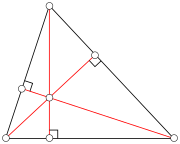


That brings us to stoichiometry. Stoichiometry is the study of relationships in chemical reactions. in other words, it's the study of what amounts of things are equal to amounts of other things in chemical reactions.

oxidation number calculator





Here is an activity for Prealgebra and Algebra students. This introductory activity is not meant to be a conundrum for our crack problem-solvers out there, but the extensions below may prove more challenging.
Target Audience: Grades 6-9 (Prealgebra through Algebra 1)
Major Standards/Objectives:
(1) Represent! ing numerical relationships and patterns algebraically
(2) Recognizing, interpreting and developing function notation
(3) Applying remainder concepts
A 2-column number matrix (grid) is shown above and assumed to continue indefinitely. We will be visiting (traversing) the numbers in the grid starting in the upper left corner with 1. Following the arrows we see that the tour proceeds right, then down, followed by left, then down and repeats.
First, some examples of the function notation we will be using to describe this traversal:
T(1) = 1 denotes that the 1st cell visited contains the number 1.
T(4) = 3 denotes that the 4th cell visited contains the number 3.
Similarly, T(6) = 6.
STUDENT/READER ACTIVITY/INVESTIGATION
(a) Determine T(1), T(5), T(! 9), T(13), T(17).
(b) 1, 5, 9, 13, 17, ... all leave a re! mainder of ___ when divided by 4. (Fill in the blank)
Therefore, these numbers can be represented algebraically as 4n + 1, n = 0,1,2,3,...
(c) Based on (a) and (b), it appears that T(4n+1) = _______, where n = 0,1,2,3...
(d) Determine T(2), T(6), T(10), T(14)
(e) 2,6,10,14,... all leave a remainder of ___ when divided by 4. Therefore, these numbers can be represented algebraically as ______, n = _________ (Fill in blanks)
(f) Based on (d) and (e), it appears that T( _____ ) = _____, n = __________.
Note: The instructor may choose to start n from zero or one throughout this activity. I will vary it depending on our needs. It is important for students to see how restrictions (domain of a variable) is critical for an accurate description and that more than one set of restrictions is possible (provided they are equivalent).
Since T(3) = 4 and T(4) = 3, we cannot say that T(n) = n for all n. The numbe! rs 3 and 4 leave remainders of 3 and 0 respectively when divided by 4. We will need a different rule for these kinds of numbers. Let's collect some more data:
(g) By extending the table, determine T(7) and T(8); T(11) and T(12); T(15) and T(16)
(h) Without extending the table, make a conjecture about the values of T(35) and T(36).
(i) Numbers such as 4,8,12,16,... can be represented algebraically as ____, n= 1,2,3,...
(j) Numbers such as 3,7,11,15,... can be represented algebraically as ____, n = 1,2,3,...
Note: Again, the instructor may not like varying the restrictions here. Adjust as needed.
(h) Ok, so you're an expert now. Well, prove it:
T(100) = ______; T(153) = _____; T(999) = ______
Show or explain your method.
EXTENSIONS
Surely, a 3-column number grid or even a 5-column number grid can't be that much more difficult to solve using the same kind ! of traversal (move to the right until you come to the end, go ! down, mo ve left until you come to the end, move down, lather, rinse, repeat...). ENJOY!
Ok, for our experts: Try an n x n grid!
DISCLAIMER: As with all of the investigations I publish, these are essentially original creations and therefore have not been proofread or edited by others. You are the 'others!'. You may not only find errors but alternate and perhaps superior ways to present these ideas.
Also, please adhere to the Guidelines for Attribution in the sidebar.
A triangle is one of the basic shapes of geometry: a polygon with three corners or vertices and three sides or edges which are line segments. A triangle with vertices A, B, and C is denoted ![]() ABC.
ABC.
In Euclidean geometry any three non-collinear points determine a unique triangle and a unique plane (i.e. a two-di! mensional Euclidean space).
Triangles can be classified according to the relative lengths of their sides:
 |  | |
| Equilateral | Isosceles | Scalene |
Triangles can also be classified according to their internal angles, mea! sured here in degrees.
 |  |  |
| Obtuse | Acute | |
 | ||
| Oblique | ||
Triangles are assumed to be two-dimensional plane figures, unless the context provides otherwise (see Non-planar triangles, below). In rigorous treatments, a triangle is therefore called a 2-simplex (see also Polytope). Elementary facts about triangles were presented by Euclid in books 1–4 of his Elements, around 300 BCE.
The internal angles of a triangle in Euclidean space always add up to 180 degrees. This allows determination of the third angle of any triangle as soon as two angles are known. An external angle, or exterior angle, of a triangle is an angle that is adjacent and supplementary to an internal angle. Any external angle of any triangle is equal to the sum of the two internal angles that it is not adjacent to; this is the exterior angle theorem. The three external angles (one for each vertex) of any triangle add up to 360 degrees.[4]
The sum of the lengths of any two sides of a triangle always exceeds the length of the third side, a principle known as the triangle inequality.[5]
Two triangles are said to be similar if and only if each internal angle of one triangle is equal to an internal angle of the other.[6] In th is case, all sides of one triangle are in equal proportion to sides of the other triangle.
A few basic postulates and theorems about similar triangles:
Two triangles that are congruent have exactly the same size and shape:[8] all pairs of corresponding internal angles are equal in size, and all pairs of corresponding sides are equal in length. (This is a total of six equalities, but three are often sufficient to prove congruence.)
Some sufficient conditions for a pair of triangles to be congruent (from basic postulates and theorems of Euclid):
An important case:
Using right triangles and the concept of similarity, the trigonometric functions sine and cosine can be defined. These are functions of an angle which are investigated in trigonometry.
A central theorem is the Pythagorean theorem, which states in any right triangle, the square of the length of the hypotenuse equals the sum of the squares of the lengths of the two other sides. If the hypotenuse has length c, and the legs have lengths a and b, then the theorem states that

The conve! rse is true: if the lengths of the sides of a triangle satisfy the above equation, then the triangle has a right angle opposite side c.
Some other facts about right triangles:

For all triang! les, ang les and sides are related by the law of cosines and law of sines (also called the cosine rule and sine rule).
There are hundreds of different constructions that find a special point associated with (and often inside) a triangle, satisfying some unique property: see the references section for a catalogue of them. Often they are constructed by finding three lines associated in a symmetrical way with the three sides (or vertices) and then proving that the three lines meet in a single point: an important tool for proving the existence of thes! e is Ceva's theorem, which gives a criterion for determining when three such lines are concurrent. Similarly, lines associated with a triangle are often constructed by proving that three symmetrically constructed points are collinear: here Menelaus' theorem gives a useful general criterion. In this section just a few of the most commonly-encountered constructions are explained.

A perpendicular bisector of a triangle is a straight line passing through the midpoint of a side and being perpendicular to it, i.e. forming a right angle with it. The three perpendicular bisectors meet in a single point, the tria! ngle's circumcenter; this point is the center of the circumcircle, the circle passing through all three vertices. The diameter of this circle can be found from the law of sines stated above.
Thales' theorem implies that if the circumcenter is located on one side of the triangle, then the opposite angle is a right one. More is true: if the circumcenter is located inside the triangle, then the triangle is acute; if the circumcenter is located outside the triangle, then the triangle is obtuse.

An altitude of a triangle is a straight line through a vertex and perpendicular to (i.e. forming a right angle with) the opposite side. This opposite side is called the base of the altitude, and the point where the altitude intersects the ! base (or its extension) is called the foot of the altitude. The length of the altitude is the distance between the base and the vertex. The three altitudes intersect in a single point, called the orthocenter of the triangle. The orthocenter lies inside the triangle if and only if the triangle is acute. The three vertices together with the orthocenter are said to form an orthocentric system.

An angle bisector of a triangle is a straight line through a vertex which cuts the corresponding angle in half. The three angle bisectors intersect in a single point, the incenter, the center of the triangle's incircle. The incircle is the circle which lies inside the triangle and touches all three! sides. There are three other important circles, the excircles; they lie outside the triangle and touch one side as well as the extensions of the other two. The centers of the in- and excircles form an orthocentric system.

A median of a triangle is a straight line through a vertex and the midpoint of the opposite side, and divides the triangle into two equal areas. The three medians intersect in a single point, the triangle's centroid. The centroid of a stiff triangular object (cut out of a thin sheet of uniform density) is also its center of gravity: the object can be balanced on its centroid. The centroid cuts eve! ry median in the ratio 2:1, i.e. the distance between a vertex and the centroid is twice the distance between the centroid and the midpoint of the opposite side.

The midpoints of the three sides and the feet of the three altitudes all lie on a single circle, the triangle's nine-point circle. The remaining three points for which it is named are the midpoints of the portion of altitude between the vertices and the orthocenter. The radius of the nine-point circle is half that of the circumcircle. It touches the incircle (at the Feuerbach point) and the three excircles.

The centroid (yellow), orthocenter (blue), circumcenter (green) and barycenter of the nine-point ! circle (red point) all lie on a single line, known as Euler's line (red line). The center of the nine-point circle lies at the midpoint between the orthocenter and the circumcenter, and the distance between the centroid and the circumcenter is half that between the centroid and the orthocenter.
The center of the incircle is not in general located on Euler's line.
If one reflects a median at the angle bisector that passes through the same vertex, one obtains a symmedian. The three symmedians intersect in a single point, the symmedian point of the triangle.

Calculating the area of a triangle is an el! ementary problem encountered often in many different situations. The best known and simplest formula is:

where A is area, b is the length of the base of the triangle, and h is the height or altitude of the triangle. The term 'base' denotes any side, and 'height' denotes the length of a perpendicular from the point opposite the side onto the side itself.
Although simple, this formula is only useful if the height can be readily found. For example, the surveyor of a triangular field measures the length of each side, and can find the area from his results without having to construct a 'height'. Various methods may be used in practice, depending on what is known about the triangle. The following is a selection of frequently used! formulae for the area of a triangle.[9]
The area of a parallelogram can be calculated using vectors. Let vectors AB and AC point respectively from A to B and from A to C. The area of parallelogram ABDC is then  , which is the magnitude of the cross product of vectors AB and AC.
, which is the magnitude of the cross product of vectors AB and AC.  is equal to
is equal to  , where h represents the altitude h as a vector.
, where h represents the altitude h as a vector.
The area of triangle ABC is half of this, or  .
.
The area of triangle ABC can also be expressed in terms of dot products as follows:

The height of a triangle can be found through an application of trigonometry. Using the labelling as in the image on the left, the altitude is h = a sin γ. Substituting this in the formula S = ½bh derived above, the area of the triangle can be e! xpressed as:

(where α is the interior angle at A, β is the interior angle at B, and γ is the interior angle at C).
Furthermore, since sin α = sin (π - α) = sin (β + γ), and similarly for the other two angles:

If vertex A is located at the origin (0, 0) of a Cartesian coordinate system and the coordinates of the ! other two vertices are given by B = (xB, yB) and C = (xC, yC), then the area S can be computed as ½ times the absolute value of the determinant

For three general vertices, the equation is:

In three dimensions, the area of a general triangle {A = (xA, yA, zA), B = (xB, yB, zB) and C = (xC, yC, zC)} is the Pythagorean sum of the areas of the respective projections on the three principal planes (i.e. x = 0, y = 0 and z = 0):

The shape of the triangle is determined by the lengths of the sides alone. Therefore the area S also can be derived from the lengths of the sides. By Heron's formula:

where s = ½ (a + b + c) is the semiperimeter, or half of the triangle's perimeter.
Three equivalent ways of! writing Heron's formula are


In general, there are various accepted methods of calculating the length of a side or the size of an angle. Whilst certain methods may be suited to calculating values of a right-angled triangle, others may be required in more complex situations.

In right triangles, the trigonometric ratios of sine, cosine and tangent can be used to find unknown angles and the lengths of unknown sides. The sides of the triangle are known as follows:
The sine of an angle is the ratio of the length of the opposite side to the length of the hypotenuse. In our case

Note that this ratio does not depend on the particular right triangle chosen, as long as it contains the angle A, since all those triangles are
The cosine of an angle is the ratio of the length of the adjacent side to the length of the hypotenuse. In our case

The tangent of an angle is the ratio of the length of the opposite side to the length of the adjacent side. In our case

The acronym "SOHCAHTOA" is a useful mnemonic for these ratios.
The inverse trigonometric functions can be used to calculate the internal angles for a right angled triangle with the length of any two sides.
Arcsin can be used to calculate an angle from the length of the opposite side and the length of the hypotenuse.

Arccos can be used to calculate an angle from the length of the adjacent side and the length of the hypontenuse.

Arctan can be used to calculate an ! angle fr om the length of the opposite side and the length of the adjacent side.

The law of sines, or sine rule[10], states that the ratio of the length of side a to the sine of its corresponding angle α is equa! l to the ratio of the length of side ! b to the sine of its corresponding angle β.

The law of cosines, or cosine rule, connects the length of an unknown side of a triangle to the length of the other sides and the angle opposite to the unknown side. As per the law:
For a triangle with length of sides a, b, c and angles of α, β, γ respectively, given two known lengths of a triangle a and b, and the angle between the two known sides γ (or the angle opposite to the unknown side c), to calculate the third side c, the following formula can be used:

A non-planar triangle is a triangle which is not contained in a (flat) plane. Examples of non-planar triangles in non-Euclidean geometries are spherical triangles in spherical geometry and hyperbolic triangles in hyperbolic geometry.
While the internal angles in planar triangles always add up to 180°, a hyperbolic triangle has angles that add up to less than 180°, and a spherical triangle has angles that add up to more than 180°. A hyperbolic triangle can be obtained by drawing on a negatively-curved surface, such as a saddle surface, and a spherical triangle can be obtained by drawing on a positively-curved surface such as a sphere. Thus, if one draws a giant triangle on the surface of the Earth, one will find that the sum of its angles is greater than 180°. It is possible to draw a triangle on a sphere such that each of its internal angles is! equal to 90°, adding up to a total of 270°.